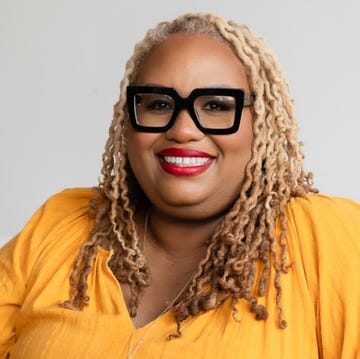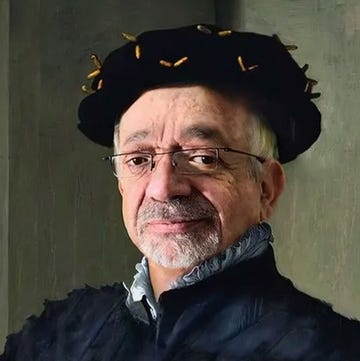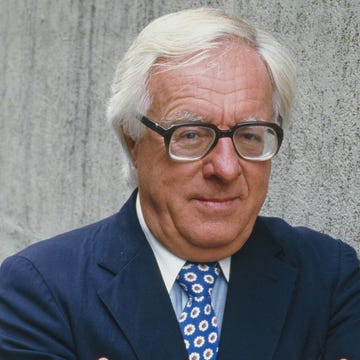Lili Anolik’s Didion and Babitz begins with the discovery of a fiery letter—never sent—written in 1972 by Eve Babitz to her exacting mentor of sorts, Joan Didion (or, as Babitz would call her, “Lady Dana”). One favorite line: “Could you write what you write if you weren’t so tiny, Joan? Would you be allowed to if you weren’t physically so unthreatening?”
Didion and Babitz circled each other in Los Angeles during the 1960s—first at dinner parties at Didion’s house on Franklin Avenue and later in Malibu. Didion was an early champion of the nearly decade-younger Babitz, helping her place a story (“The Sheik”) at Rolling Stone and agreeing to edit her first book, the 1974 essay collection Eve’s Hollywood. Before the book was released, however, the notoriously impulsive and irreverent Babitz would, essentially, fire Didion, declaring that she “knew nothing about what I knew.”
Anolik, a Vanity Fair contributing editor and author of the 2019 biography Hollywood’s Eve: Eve Babitz and the Secret History of L.A., nimbly reconstructs Los Angeles at the zenith of its 1970s bohemia, offering cameos (Jim Morrison, Andy Warhol) and colorful details (benders, love affairs). But the book’s depth derives from the contrast between the complex interior worlds of its protagonists as they wrestle with work and ambition. While there’s little documented direct exchange between Didion and Babitz, Anolik puts the pair in conversation through her curation of letters, journal entries, and (in Babitz’s case) personal observation. The emerging relationship falls somewhere on the Venn diagram of friends, lovers, enemies, sisters; but Anolik never lets it stay one thing for very long.
This interview has been edited for brevity and clarity.
In your note to the reader, you reference the scene in Ingmar Bergman’s Persona in which the two female main characters gaze at each other in a mirror. Do you think Babitz and Didion were a reflection of each other?
Eve and Joan were both each other’s ideal in this funny way. And then each other’s cautionary tale. When I found Eve’s letter, it was like listening in on a lover’s quarrel. The feelings were so passionate and volatile.
When I posted about Eve’s letter to Joan on Instagram, Courtney Love DMed me something like, “These poison pen letters are nothing compared to the ones Madonna and I exchanged.” I feel like these are almost archetypes: You have your eye-on-the-prize, contained, dead-eyed ambition—that would be a Joan or Madonna. And then you have the emotionally sloppy, morally authentic figure like Courtney or Eve. These two types are endlessly attracted and repelled by each other.
I think a lot of women can relate to the dynamic between Didion and Babitz.
In some ways, there’s no word for it. I call it a friendship, but their dynamic is not quite trappable in language yet. We tend to prize romantic relationships, but there is a kind of friendship that is not exactly friendship. And that person might be the closest person to you on the planet.
Rejecting Didion could have been a career-ending move for Babitz; why did she do it?
Joan behaved really well toward Eve in the early days. For Joan to agree to edit her first book—that is not a casual kindness. That is a big commitment. Joan tried to shield Eve and tried to help her. There was a sympathy; she knew how hard Eve’s road was. I think Eve felt it was violent to get edited in the way Joan was editing her.
There was certainly envy and frustration when Eve looked at Joan—her ability to have the career and to be a commanding figure in the culture. Eve would refuse to play any of those games and made it impossible for herself. She was not built for that; she was never going to have a long career that way. In my opinion, she was lucky to get that one masterpiece out of herself.
That masterpiece, Eve’s Hollywood, was the first of many Babitz books set in Los Angeles. Didion used the city in her books, too—Play It As It Lays and The White Album, among others—but her version feels very different.
To me, the Los Angeles Eve portrays is so much more complicated. It’s Bakersfield, Dodger Stadium, Roadside Beach, the Beverly Hills Hotel, Chateau Marmont. Los Angeles has little enclaves, and Eve hits a bunch of them. I feel like Joan writes about Los Angeles as if it’s only Hollywood—at least in Play It As It Lays. Eve argued that when Didion wrote about Los Angeles, she was sort of giving a New Yorker’s version. Eve thought Joan was pandering to New York—as if Play It As It Lays was essentially a sequel to The Day of the Locust.
You’ve already written a biography of Babitz. How did you feel about reentering her world?
This was not a book I wanted to write. I was filled with dread when I heard about the box of Eve’s letters. At the time, I was under contract to write a book on Bennington College. And then the first thing I pull out of the box is that letter to Joan. It was thrilling for me—just to hear this kind of talk. I couldn’t believe it. But I knew it meant, “Oh, I’m back. I’m back down the drain.”•
Lydia Horne is the research director at Alta Journal. Her writing has appeared in Wired, Racquet Magazine, L.A. Taco, Hyperallergic, and other publications.













